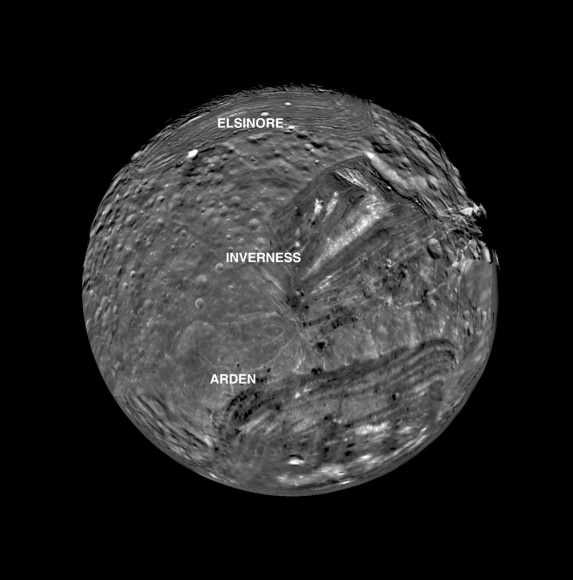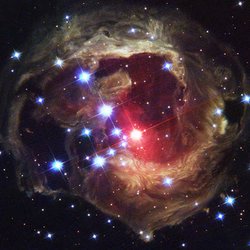This week we are joined by Dr. Sarah McAnulty. Sarah is a squid biologist and the executive director of the science communication non-profit Skype a Scientist which matches scientists with people all around the world.
Continue reading “Weekly Space Hangout: May 20, 2020 — Dr. Sarah McAnulty from Skype A Scientist”Weekly Space Hangout: May 13, 2020 – Dr. Seth Shostak from the SETI Institute
This week we are pleased to welcome Seth Shostak to the Weekly Space Hangout. Seth is Senior Astronomer and Institute Fellow at the SETI Institute. With degrees in physics and astronomy from Princeton University and Caltech, he has a long history of research in radio astronomy and in the Search for Extraterrestrial Intelligence, or SETI.
Continue reading “Weekly Space Hangout: May 13, 2020 – Dr. Seth Shostak from the SETI Institute”Universe Today’s 2015 Holiday Gift Giving Guide for the Space and Astronomy Fan
Happy Holidays everyone!
Yes, it’s that time of year again when everyone struggles with what gifts to buy their family and friends for their holiday-of-choice. Whether you are hoping to foster a love of space and science in a young child, or want to surprise that special adult “Super Space Nerd,” we here at Universe Today are here to help our readers out with ideas and recommendations to fit virtually any budget, experience level, and area of interest, including telescopes, books, and other items that the “space/science geek” in your life would love to receive!
Continue reading “Universe Today’s 2015 Holiday Gift Giving Guide for the Space and Astronomy Fan”
Returning the “Silent Sentinel” to Active Duty
Situated on the south shore of New Jersey’s Shark River lies 37 acres of land known as Camp Evans. On April 1, 2015, I was privileged to attend the dedication ceremony celebrating Camp Evans’ becoming one of only 2532 locations in the United States designated as a National Historic Landmark.
![Plaque Commemorating the Designation of Camp Evans as a National Historic Landmark. April 2, 2015. [photo: Robert Raia Photography]](https://www.stemmingthetide.net/wp-content/uploads/2015/06/NHL-Plaque-Rob.jpg)
- In 1912, Gugliemlo Marconi and his company, the American Marconi Company, constructed the Belmar Receiving Station which became part of the wireless girdle of the earth.
- In 1917, the site was acquired as part of the Navy’s World War I “Trans-Atlantic Communication System.”
- In 1941, the Army Signal Corps purchased the property to construct a top-secret research facility, and it was renamed Evans Signal Laboratory which later became Camp Evans Signal Laboratory.
- Following a visit in late October, 1953, Senator Joseph McCarthy described Camp Evans as a “house of spies.” Following an investigation that spanned 1953-1954, not one single employee was prosecuted.
But perhaps Camp Evans’ most interesting – and surprising – place in history begins with a small, informal research project taking place on a parcel of land in the Camp’s northeast corner. The ramifications of this project would ultimately give birth the to Space Age, lead to the development of the US Space Program, and start the Cold War.
Following the end of WWII, American scientists at Camp Evans continued their investigation into whether the earth’s ionosphere could be penetrated using radio waves – a feat that had been studied prior to the end of the War but had long been believed impossible. Project Diana, led by Lt. Col. John H. DeWitt, Jr., aimed to prove that it could indeed be penetrated. A group of radar scientists awaiting their discharge from the Army modified a radar antenna – including significantly boosting its output power – and placed it in the northeast corner of Camp Evans.

On the morning of January 10, 1946, with the dish pointed at the rising moon, a series of radar signals was broadcast. Exactly 2.5 seconds after each signal’s broadcast, its corresponding echo was detected. This was significant because 2.5 seconds is precisely the time required for light to travel the round trip distance between the earth and the moon. Project Diana – and her scientists – had successfully demonstrated that the ionosphere was, in fact, penetrable, and communication beyond our planet was possible. And thus was born the Space Age – as well as the field of Radar Astronomy.
![SCR-271 Bedspring RADAR Antenna Pointing at the Moon [photo: David Mofenson; InfoAge website]](https://www.stemmingthetide.net/wp-content/uploads/2015/06/d-i-030-David-Mofenson.jpg)
![60-Meter Parabolic Dish Being Constructed on Project Diana Site [photo: Frank Vosk; InfoAge website]](https://www.stemmingthetide.net/wp-content/uploads/2015/06/Dish-Assembly-1-w-Frank-Vosk.jpg)

![President Eisenhower and NASA Administrator Glennan Viewing the First Satellite Images from TIROS I. [photo: wikimedia commons]](https://www.stemmingthetide.net/wp-content/uploads/2015/06/President_Eisenhower_and_NASA_Administrator_Glennan_examine_photographs_taken_by_TIROS-1.jpg)
In addition to serving as the downlink Ground Communications Center for the TIROS I and TIROS II satellites, this same dish has also tracked:
- Explorer 1, America’s first satellite, in January, 1958 (pre-dates the launch of TIROS I), and
- Pioneer V Space Probe.
Sadly, by the mid-1970s, the technology within the TIROS dish (officially named the TLM-18 Space Telemetry Antenna) had become obsolete, and it was retired. Camp Evans was decommissioned and closed in 1993 and its land was transferred to the National Park Service. But in 2012, Camp Evans was designated a National Historic Landmark, and thus began a new, revitalized era for this immensely significant site. In addition to the TIROS Dish and the InfoAge Science History Learning Center and Museum, Camp Evans is also home to:
- The Military History Museum;
- The Radio Technology Museum;
- The National Broadcasters’ Hall of Fame.

DISH RESTORATION
In 2001, InfoAge stepped in and began preserving and restoring the mechanical systems of the TIROS dish. In 2006, a donation from Harris Corporation allowed the dish to be completely repainted and preserved.
Norman Jarosik, Senior Research Physicist at Princeton University and Daniel Marlow, PhD. and Evans Crawford 1911 Professor of Physics at Princeton, as well as countless volunteers from the University, InfoAge, Wall Township (NJ), and the Ocean-Monmouth Amateur Radio Club, Inc. (OMARC) have provided the engineering/scientific knowledge and sweat-equity required to refurbish and update the inoperative radio dish. The original vacuum-tube technology has been replaced with smaller electronic counterparts. Rusty equipment has been replaced. Seized/inoperative motors have been reconditioned and rebuilt. And system-level software controls have been added. The TIROS dish has been transformed into a truly modern, state-of-the-art Radio Astronomy Satellite Dish and Control Center.
![The TIROS Dish as it Appears Today [photo: Nancy J. Graziano]](https://www.stemmingthetide.net/wp-content/uploads/2015/06/TIROS-Dish-Today-njg-680x1024.jpg)
![The Control Console Today. [photo: Nancy J. Graziano]](https://www.stemmingthetide.net/wp-content/uploads/2015/06/Control-Console-njg-1024x680.jpg)
FUTURE PLANS
After almost 15 years of restoration and nearly 40 years since it last listened to the sky, the TIROS dish is once again operational, is detecting radio signals from the universe, and is well on its way to be used for science education.
Work continues on renovating Building 9162, the original TIROS Control Building, to convert it into the InfoAge Visitor Center. Plans include a NASA-style control room with theater seating for 20-30 students, a full-scale model of the original TIROS I satellite, and other exhibits dedicated to the history of Project Diana, the TIROS program, and the scientific impact these projects have had on our daily lives.
![Visitor Center Floorplan [credit: InfoAge]](https://www.stemmingthetide.net/wp-content/uploads/2015/06/Floorplan-1024x897.jpg)
If you are interested in visiting the InfoAge Science History Learning Center and Museum at Historic Camp Evans, they are open to the public on Wednesdays, Saturdays, and Sundays, from 1-5pm.
To learn more about Camp Evans, Project Diana, the TIROS Satellite project, and InfoAge, tune into this week’s Weekly Space Hangout. This week’s special guest is Stephen Fowler, the Creative Director at InfoAge. He will be chatting with Fraser about the history and plans for Camp Evans and the TIROS dish.
Still want to learn more? Click on any of the links provided in this article, or visit the following sites:
‘Frankenstein’ Moon: Tidal Forces From Uranus May Have Contributed to Miranda’s Bizarre Appearance

Miranda, the innermost of Uranus’ five moons, has a “Frankenstein”-like appearance: it looks as though it was pieced together from parts that didn’t quite fit together properly. Plus, it has incredibly diverse surface features including canyons up to 12 times deeper than Earth’s Grand Canyon, impact craters, cliffs, and parallel grooves called sulci.
Over the years, various hypotheses have been presented in an attempt to account for Miranda’s enigmatic appearance. First thought to be the result of a catastrophic impact, disintegration, and subsequent reassembly, scientists now believe that some of Miranda’s features might have been influenced by Uranus itself, and are the result of convection: thermally-induced resurfacing from tidal forces from the planet.

Miranda was discovered in 1948 by Gerard Kuiper. Although it is only 293 miles (471 kilometers) in diameter (approximately one-seventh that of Earth’s moon,) it has one of the strangest and most varied landscapes in our Solar System.
Central to the new research was analysis of three very large, geometric shaped features known as coronae, which are only found on one other planetary body. Coronae were first identified on Venus in 1983 by Venera 15/16 radar imaging equipment.
A leading theory about their formation has been that they form when warm, sub-surface fluids rise to the surface and form a dome. As the edges of the dome cool, the center collapses and warm fluid leak out its sides, forming a crown-like structure, or corona. Based on this premise, the question is then raised as to what mechanism/processes in Miranda’s past warmed its interior sufficiently to produce warm, sub-surface fluids that resulted in coronae formation. Scientists believe that tidal warming played an important role in the formation of the coronae, but the process by which this internal heating led to these features has remained unclear.
Extensive 3D computer simulations conducted by Brown University’s Noah P. Hammond and Amy C. Barr have produced results that are consistent with the three coronae seen on Miranda. In their paper titled, “Global Resurfacing of Uranus’s Moon Miranda by Convection,” Hammond and Barr summarize their results as follows:
“We find that convection in Miranda’s ice shell powered by tidal heating can generate the global distribution of coronae, the concentric orientation of sub-parallel ridges and troughs, and the thermal gradient implied by flexure. Models that account for the possible distribution of tidal heat ing can even match the precise locations of the coronae, after a reorientation of 60°.”
Using Saturn’s moon Enceladus as a baseline due to its similarity in size, composition, and orbital frequency to Miranda, original calculations estimate that as much as 5 GW of tidal dissipation power could be generated. Hammond and Barr’s simulation results indicate almost twice that amount of power would have been created:
“Simulations that match the thermal gradient from flexure have total power outputs of close to 10 GW , somewhat larger than the total power we predict could be generated during orbital resonance.”
Results from Hammond and Barr’s simulations provide a preliminary set of answers that strive to unlock the mysteries of Miranda’s bizarre appearance. Future simulations and studies into the complex nature of tidal heating will build upon these results to provide further insight into the enigmatic moon we call Miranda.
“Global Resurfacing of Uranus’s Moon Miranda by Convection,” was published online on 15 September 2014 in GEOLOGY, a journal of The Geological Society of America. You can read the abstract here.
Titan’s Disappearing “Magic Island” Reappears in New Images

Earlier this year, we reported on a mysterious “ghost” object that had suddenly appeared and then disappeared on Saturn’s largest moon, Titan. Now, new observations by the Cassini team show this elusive feature is back again.
You may recall that a so-called “transient feature,” nicknamed “Magic Island” by the Cassini team, was first observed by Cassini in July 2013 during a Titan flyby. Magic Island has continued to puzzle scientists because shortly after its initial appearance, it disappeared and has been in hiding ever since. That is, until it just-as-suddenly reappeared in images created using SAR data collected in mid-August, 2014.
However, with its reemergence comes additional questions for scientists since its physical appearance has changed rather significantly, having roughly doubled in size during its 13 months in hiding, growing from 30 square miles [75 square km] in 2013 to almost 60 square miles [160 square km], as seen in the latest images, above.
Although scientists initially considered that this had been a transient feature, they now suspect that its appearance and disappearance may be the result of Titan’s changing seasons. (Titan is currently entering summer in its northern hemisphere.) There has also been some speculation that the feature may be rising gas bubbles, surface waves, or solid material at (or just below) the surface of Ligeia Mare.
Titan’s seas are made of liquid methane and ethane, organic compounds which are gases on Earth but liquids in Titan’s incredibly chilly -290º F (-180º C) environment.
“Science loves a mystery, and with this enigmatic feature, we have a thrilling example of ongoing change on Titan,” said Stephen Wall, the deputy team lead of Cassini’s radar team, based at NASA’s Jet Propulsion Laboratory in Pasadena, California. “We’re hopeful that we’ll be able to continue watching the changes unfold and gain insights about what’s going on in that alien sea.”
The monitoring of Titan’s changing climate and surface features is a primary goal of Cassini’s ongoing, and twice-extended, mission. Further studies may confirm or eliminate explanations that have been presented to date – or they may lead to completely new hypotheses about mysteries held within and below Titan’s seas.

In addition to its original primary mission, Cassini, which was launched in October 1997 and entered Saturn’s orbit on July 1, 2004, has been extended two times – the Extended Equinox Mission in July 2008, and the Solstice Mission in November, 2010. In September, 2014, NASA announced that it had fully funded Cassini through its planned completion in 2017.
For more information about Cassini and its ongoing mission, visit:


